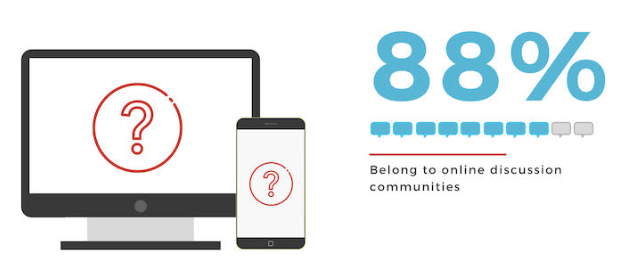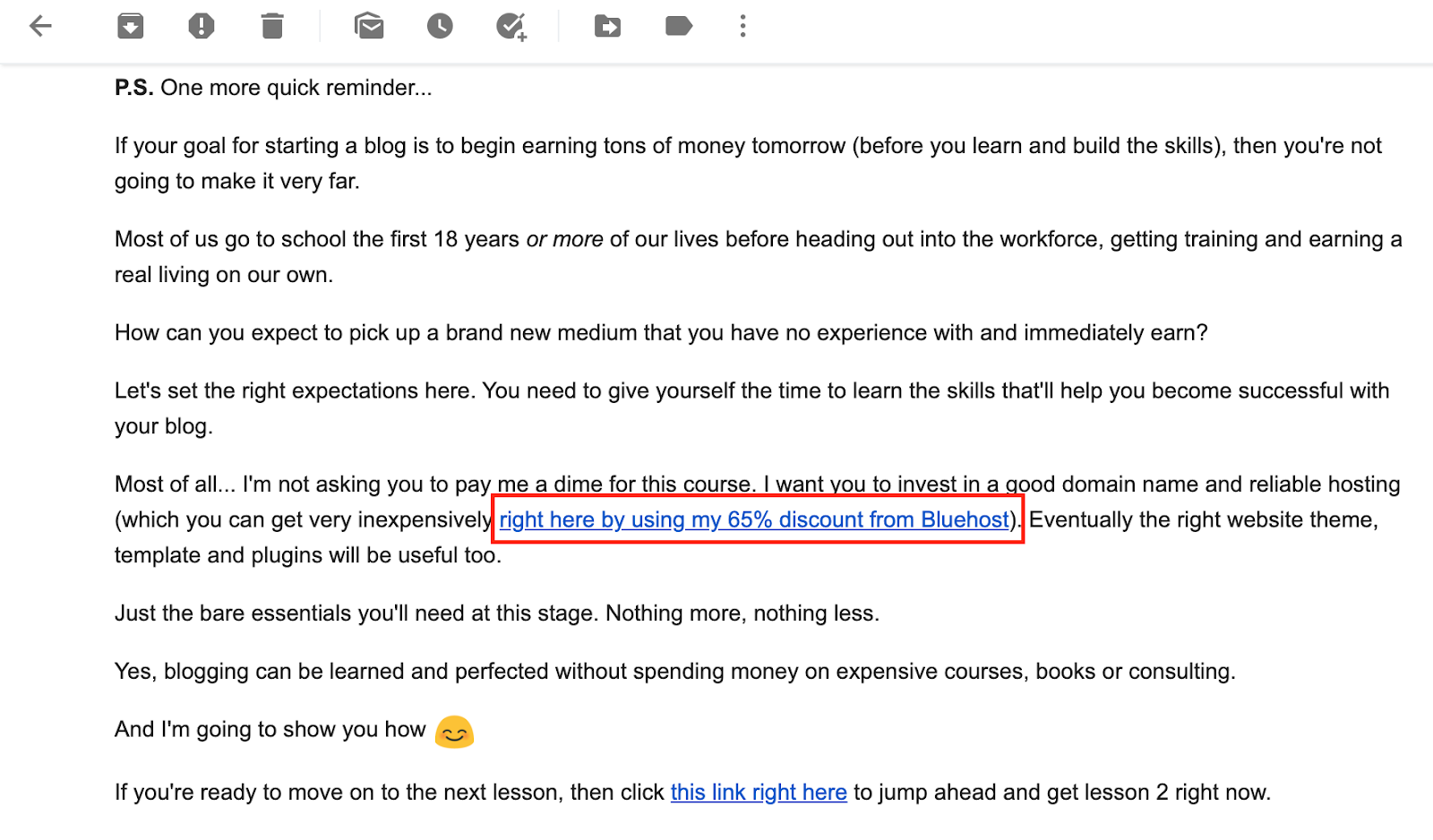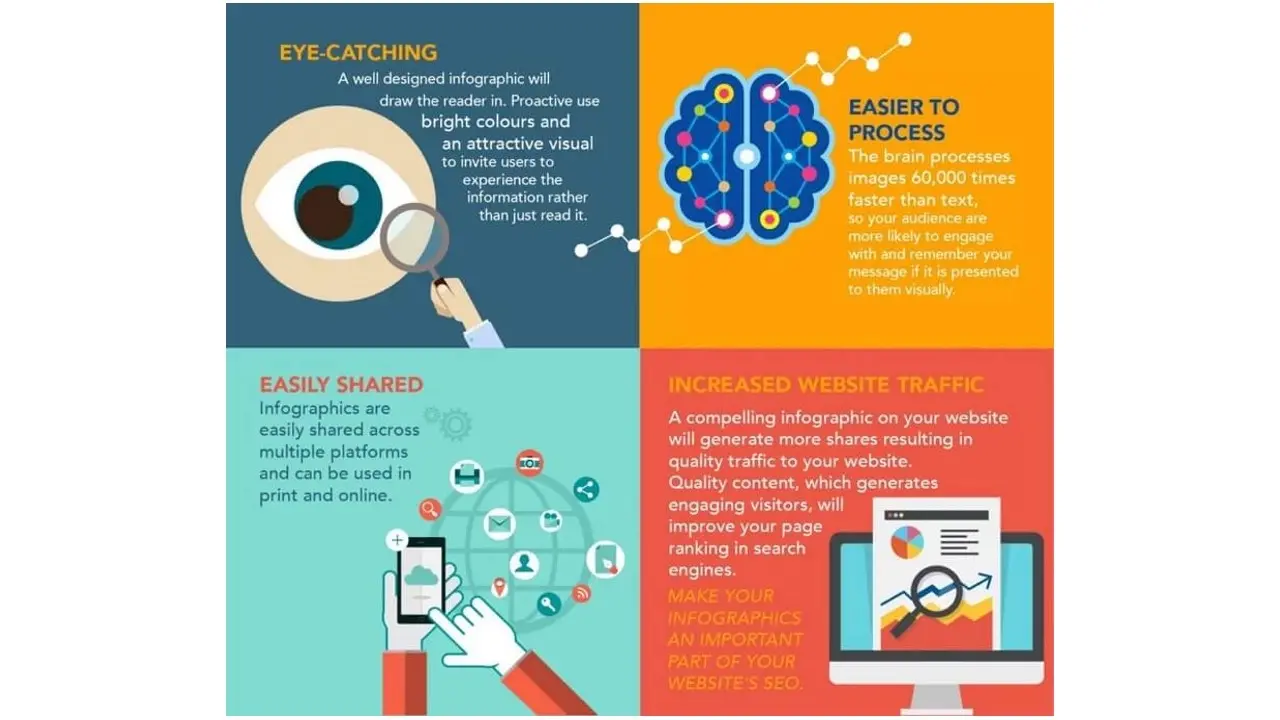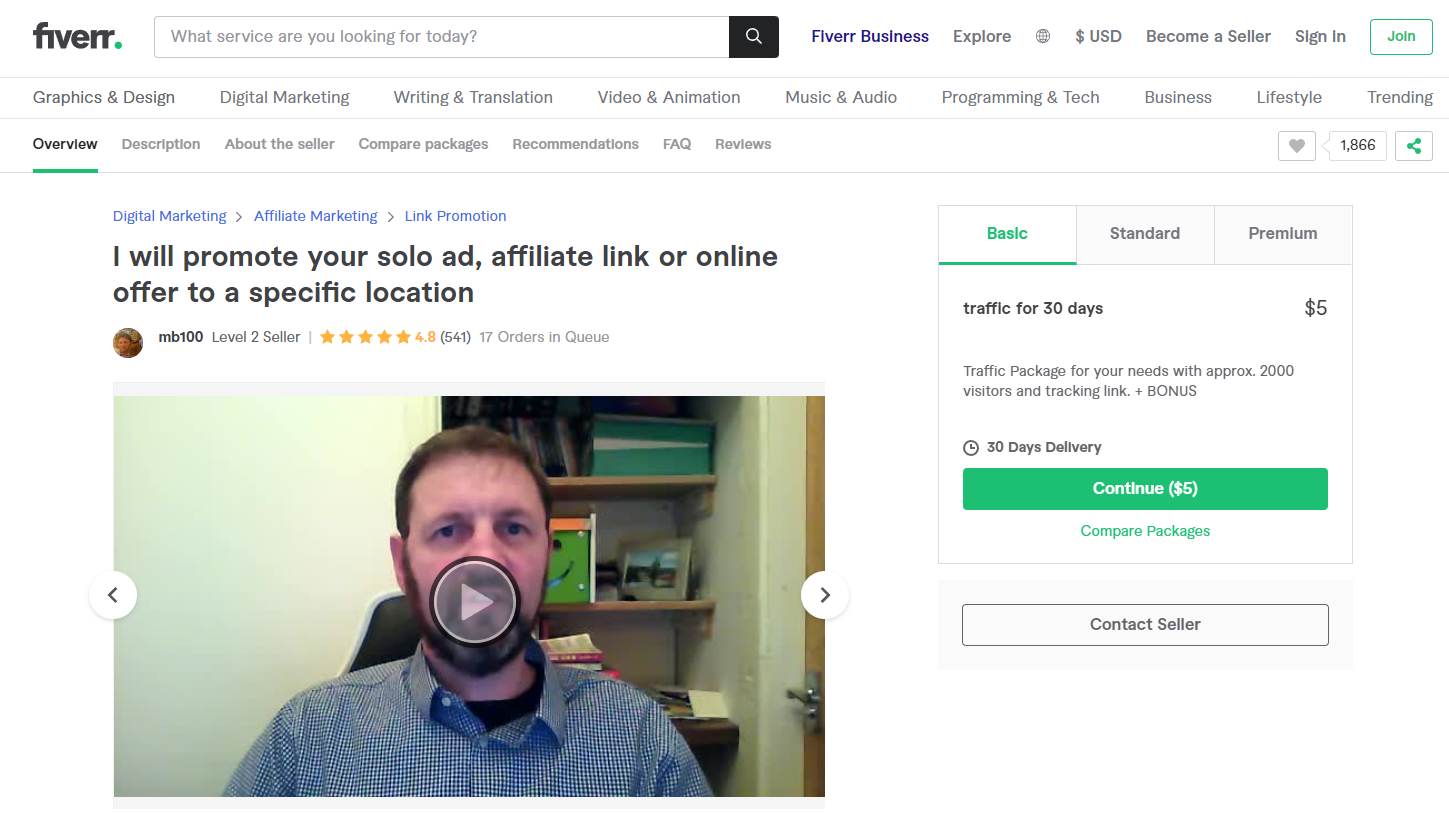If you're looking to make money with affiliate marketing as a beginner, then you need a proper plan. Rather than simply publishing random content and inserting affiliate links in the article, you must first come up with a strategy designed to help you generate targeted traffic to your offer for maximum conversions.
Keep in mind that the quality of your site's traffic can make or break your affiliate marketing business. And while attracting high-quality traffic can be a daunting process, there are a number of techniques that you can employ to improve your results and generate targeted leads.
You can promote your affiliate links in a number of places, and the promotion methods in this article are broken down into different categories according to the type of platform where you can promote your link.
This includes the following:
Blogs
YouTube
[Social Media
Email
Digital Products
Mobile Marketing
Without further ado, let’s dive right in.
1. Social Media and Forums
Using social media strategy is among the top tips for driving high-quality traffic to your affiliate marketing website.
Recent studies show that 88% of social media users belong to at least one online discussion community.

The majority of these users go to online forums every day to search for information or get answers to simple questions. This offers a great opportunity for affiliate marketers who can provide answers while positioning their product as the perfect solution.
You can use any type of social media content, such as:
Organic Posts
Sponsored Posts
User-Generated Content … and so on.
Social media posts can include text, videos, images, GIFs, memes, infographics, or basically anything else found on social media. You can include a link to your affiliate offer within any type of content that resonates with your target audience.
Whenever someone clicks on the link and makes a purchase, you get paid for your recommendation.
Make sure when promoting your links that you pique your audience's interest enough for them to click on the link to learn more.
2. Affiliate Banners
Another way to promote your affiliate links is by placing affiliate banners on your website. Although you'll find that contextual links are typically more effective for driving sales, banners can still help your campaign by making it more visually appealing.
Your affiliate link will be automatically embedded in the code provided, which makes things a lot easier for you.
You can place these on the sidebar, header, or footer. You can even add them to your content. Just keep in mind that, generally speaking, you'll get more clicks when your affiliate banner is placed higher on the page.
3. Product Reviews
Another simple way to promote an affiliate link is to use product reviews. Write a review of the product and add your affiliate link within the content.
Online reviews are the main source for people looking to make an informed buying decision. 97% of consumers state that they search for product reviews before making a purchase.
Make sure you are honest in your reviews.
This goes a long way toward building trust with your audience. No product is perfect, so don't sugarcoat the negatives just to make a sale.
Aim for a well-rounded review that includes both the pros and cons of the product so you can help customers make an informed decision.
4. Product Comparisons
Another excellent way to create affiliate content that garners trust is to write product comparisons.
Place similar products side-by-side and give buyers a clear overview of the benefits and drawbacks of each. Make it as easy as possible for readers to understand which products would best suit their needs.
For example, if comparing products like computers, you may want to add a table that lists the specs you are evaluating, such as battery life, storage capacity, warranty, etc.
If you're not sure what information to include, check out the manufacturer's website for each of the products on your list. There you'll find information that differentiates each product from the rest.
5. Product Roundups
Similar to product comparisons, you can also write product roundups where you add affiliate links to one or more products. This type of article is particularly useful when it's tough to compare products side-by-side.
Product roundups are an effective strategy because your affiliate revenue won't rely on a single link.
Having said that, you need to clearly highlight your recommended products so you can make it easier for readers to make their decision and drive more conversions at the same time. So, on your product roundup, you might have your first option listed as the "Best Overall".
6. How-To Articles
As an affiliate, not all your content has to be about reviewing your product or recommending it to customers. Every day, millions of people search for "how to" content.
If you can create how-to articles for your products, it will make your work easier as an affiliate marketer.
You can use this type of content to help people understand how to get the most from the product or service, which makes it more likely that you’ll get the click.
So, for example, if you are an affiliate promoting art supplies, you might write an article on how to choose the right paint brush for different techniques or how to teach kids to paint. At the end of your article or video, you can name the different products that viewers can use to create the painting and link to them with your affiliate marker.
7. Product Tutorials
Create tutorials that show buyers how to use a specific product and this will help you establish transparency and trust.
Consumers are a lot more inclined to purchase products when they have a firm understanding of how they work. So, the more you can boost your audience's confidence in the product, the more likely it is that you'll be able to convert them into paying customers.
For instance, someone who's never used video editing software might be intimidated by all the different features. But, by creating an easy-to-understand tutorial, they are more likely to be convinced of its ease of use after they read your post or watch your video.
8. Resource Pages
A resource page is where you compile all your favorite resources and tools to help your audience easily find the information they need in a single place without having to wade through a ton of text on your website.
So, for instance, a digital marketing site that teaches people how to start an online business might have a resource page that has things like:
Where to register a domain name
Where to get the best hosting for WordPress for your blog or website
Where to find cheap or free email marketing services
What are the best free WordPress themes
… and so on.
9. Checklists
Readers love checklists and other types of "to-do" lists that allow them to summarize everything they need to do in order to achieve a certain goal or objective.
If you can create clear instructions on what to do, as well as when and why, and include a link to an affiliate tool within that content, you'll be more likely to get a conversion.
Checklists work for all industries and niches - from recipes for cooking blogs to step-by-step tasks for building an email list. You can even make your checklist printable so customers have a physical copy to tick off items as they go.
10. Landing Pages
As an affiliate, you can create standalone website pages to help move your website visitors toward the last step in the affiliate funnel.
Landing pages work extremely well because they only have one goal: and that's to get the conversion. The design is conversion-focused and there are no other links to distract visitors and take them away from the page.
Building an affiliate landing page is a great way to promote your affiliate link and you can drive traffic to it from a variety of sources, including Facebook, Instagram, YouTube, Google, or email.
Make sure you have prominent links to your products so visitors see the link as soon as they get to the page. This is particularly important if you are targeting visitors who use mobile devices as you only have a few seconds to get their attention.
11. Guides
(e.g. Gift Guide, Buyer’s Guide, How to Start a Blog Guide, etc.)
Buyers guides offer great opportunities for promoting your affiliate link. These are comprehensive outlines designed to help visitors make the best purchasing decisions.
They are typically geared toward a particular activity or person (or both). For instance, you can have a guide for "Forex Trading for Beginners: Everything you need to get started."
If you're offering gift guides, you might focus on holidays, weddings, birthdays, or even "just because" gifts.
Either way, a guide makes it more likely that the visitor will convert by providing them with convenience and guidance so they can make the best decision.
12. Listicles
It seems like the internet is ruled by listicles these days. The vast majority of articles are about "10 ways to do X" or "15 products, you should try", and so on.
One of the reasons why listicles are so popular is because they are a clear-cut and straightforward content format. For this reason, you can use them to effectively promote your affiliate links.
For instance, if you have a digital marketing blog, you might write a post about “8 Best WordPress Plugins for Analytics”.
Just make sure you choose a topic that hasn't already been overused. Craft a heading that is fresh and enticing, and stay away from clickbait.
If you want your audience to trust you, show them that your content is value-packed and helpful instead of simply trying to get them to click through to your post using pretentious tactics in your title.
13. Case Studies
Case studies are simply real-world examples showcasing how your offer impacts people's lives. They are made up of stories outlining the different ways people use and benefit from a specific product or service.
Customers love case studies. They find them relatable as they talk about real problems faced by other people like them and how those people overcame the problems using the product you are promoting.
If you can create content that shows potential customers how other users solved their problem using your affiliate product, then the sale is as good as made.
Case studies also add an element of social proof and help to build trust with your audience. If you want a compelling way to promote your affiliate links, this is the great option to consider.
14. Videos
Videos are a great way to add a sense of realism to any of your affiliate marketing campaigns. As previously mentioned, you can create product tutorials and product reviews, but video allows you to take the strategy so much further.
For instance, you can use user-generated content (UGC) which consumers find more trustworthy compared to brand content.
Also, you can create products on boxing videos, best-of videos, quality tests, and virtually any other type of video content you can think of that gives the user more information to help them make their decision on whether or not to purchase the product.
15. eBooks
Another effective way to get traffic to your affiliate link is to write short and engaging eBooks and include your affiliate link within the content.
eBooks work well in most industries because some topics are too broad for articles or blog posts. In such a case, you can create an eBook that allows you to deep dive into a specific subject that your readers are interested in.
You can use the book as a lead magnet to help you build your email list and when someone reads it, they'll discover that it can help solve their problem which makes it likely that they will click on your affiliate link within the content.
Furthermore, you can transform your eBook into an audiobook and sell it on Audible to create an additional source of income from your efforts.
16. Email Marketing
This tactic for promoting affiliate links is simple. Use product links in your newsletters and email sequences.
Whether you're sending welcome emails, general email broadcasts, or weekly/monthly newsletters you can add relevant links recommending specific products that your audience will be interested in.
Email is particularly effective for promoting deals and limited-time offers. If your affiliate program is willing to provide you with a discount code, it will go a long way toward making your email campaign a success.
Here’s an example of an email that provides helpful information with an affiliate link embedded in the copy:

Just remember, don't sell with every email.
Always focus on providing value first, otherwise, your content will come off as inauthentic and "salesy" which will likely lead to a lot of unsubscribes.
17. Webinars
Many businesses these days use webinars as a way to educate their followers on a variety of topics related to their business and industry, while at the same time promoting their products or services.
You can do the same as an affiliate marketer. Webinars allow you to showcase your knowledge in a specific area and afford you the opportunity to answer questions from your audience so you can integrate your product into your answers.
You also have the chance to offer unique discount codes, one-time offers, or limited-time deals to any of your webinar participants.
You can use any of a number of easy-to-use webinar platforms to record and upload an evergreen webinar so you can boost your sales on autopilot.
18. Infographics
Add your affiliate link to an infographic to promote your product. If an image is worth a thousand words, then an infographic must be worth much more. It makes it a lot easier for your audience to process information.
In the past few years, infographics have had a huge increase in usage among B2B marketers, and as an affiliate marketer, you can use this to your advantage by creating infographics that combine statistics, tips, facts, industry news, and any other data relevant to your product or service.
Infographics can be quickly and easily added to your website or social media page. Just make sure that your infographics are visually appealing and easy to share if you want to drive more traffic to your site.

19. Online Courses
Adding your affiliate link to a section inside your course where it makes contextual sense is another opportunity for promoting your product.
This is similar to adding your affiliate link in your eBook. It works in pretty much the same way, but you must remember to keep it subtle in order to avoid turning it into a sales pitch.
20. Guest Posts
Guest posting is a great strategy to grow high-quality, targeted traffic. But, as an affiliate, you can use it for more than just driving traffic to your website. You can also use it to send a targeted stream of customers to your offer.
The trick to getting high conversions with the strategy is to ensure that you only guest post on blogs that have a similar audience made up of people who are likely to be interested in your offer.
So, rather than choosing a blog by size, try to target blogs that cater to your ideal audience as this will result in higher conversions for you. Add a link back to your website or landing page within the content or in your author bio (if allowed).
21. Hire Freelancers on Fiverr
Fiverr allows you to shop and buy projects for freelance affiliate link promotion. This service is perfect for anyone who knows what they need but not how to get it done.
For example, the seller in the image below offers “Reliable Product and Service Promotions Only - No Spam Links”.

You'll get approximately 2,000 visitors toward your affiliate link over a period of 30 days for just five dollars.
The traffic comes from active social media platforms, and while there are no guarantees of sales or sign-ups, it's still great online exposure for the price of a coffee.
Conclusion
An affiliate marketing strategy of simply publishing random content and adding affiliate links to it may or may not work.
But, if you really want to increase your affiliate income, then you need to have a proper plan for promoting your links using proven strategies.
Use the information in this article to help you ensure that your content reaches the right people who are likely to convert and boost your bottom line.
Which of these tips for promoting affiliate links do you find most appealing, and why? Share your reasons below!
Frequently Asked Questions
How customizable is my ecommerce store?
This depends on the eCommerce tool you use. For example, Magento is 100% customizable, and you can amend just about every aspect. Shopify on the other hand has far fewer customization options.
Can I run an eCommerce store on VPS and dedicated servers?
Yes, of course. In fact, both types of hosting should be able to handle thousands of transactions per day.
Is shared hosting good for eCommerce?
There are several advantages of using shared hosting for eCommerce, like its low cost, security, and user-friendliness. However, if you’re looking for a scalable hosting plan, managed cloud server might be a better choice for you.
Does my ecommerce store need to be PCI compliant?
Yes, if you’re going to be accepting payments via credit and debit card you’ll need to meet PCI regulations.

Ron Stefanski is a website entrepreneur and marketing professor who has a passion for helping people create and market their own online business. You can learn more from him by visiting OneHourProfessor.com
View all posts by Ron Stefanski



















